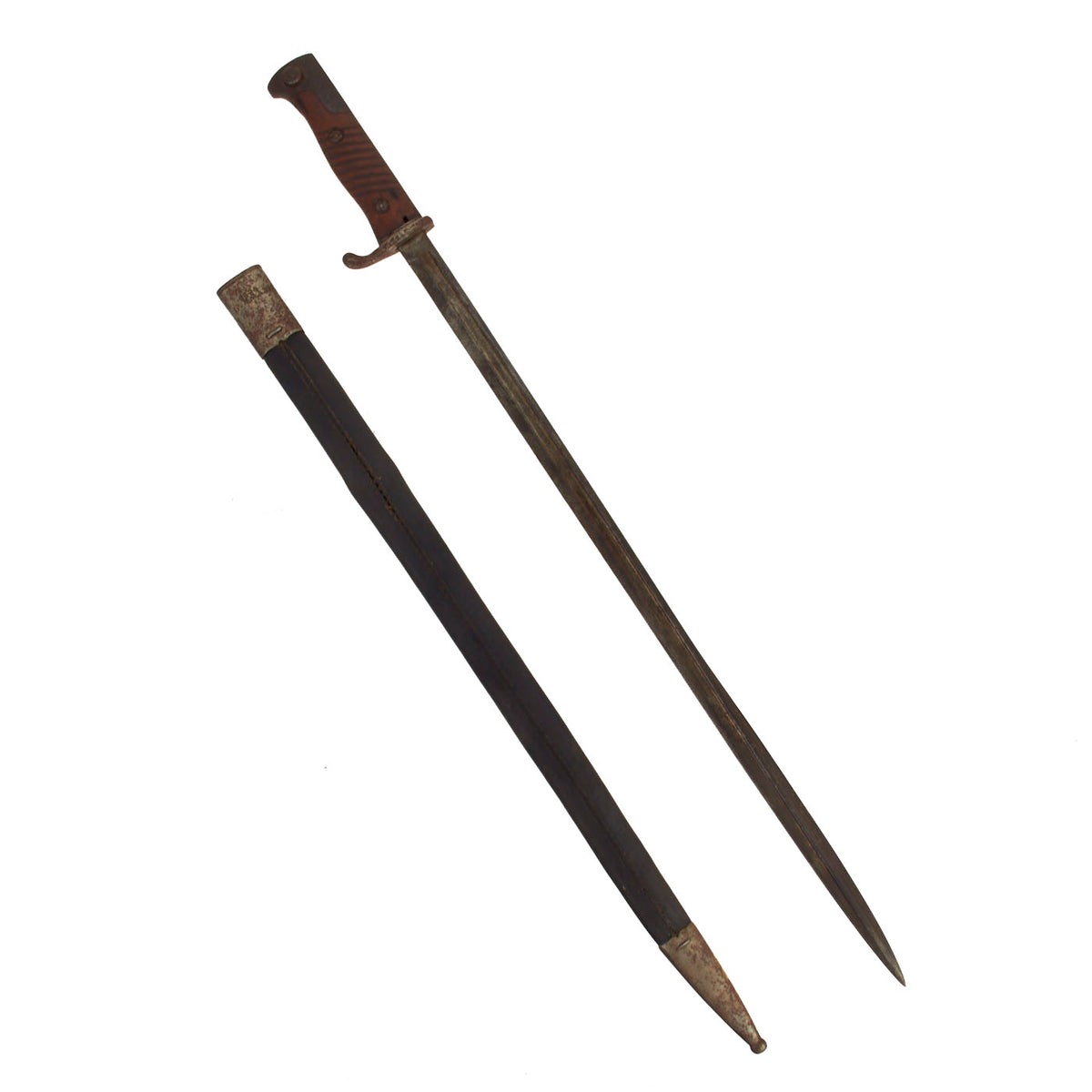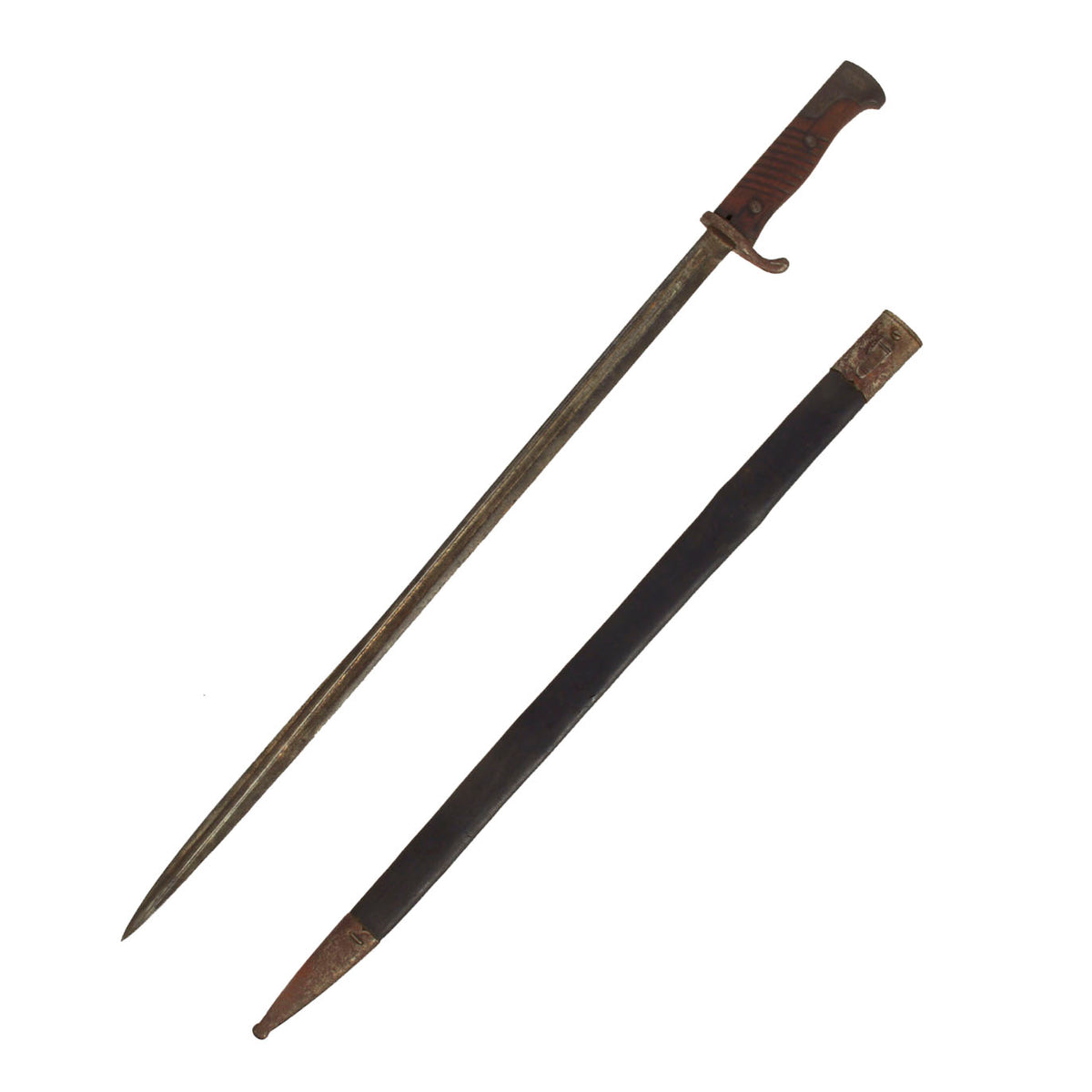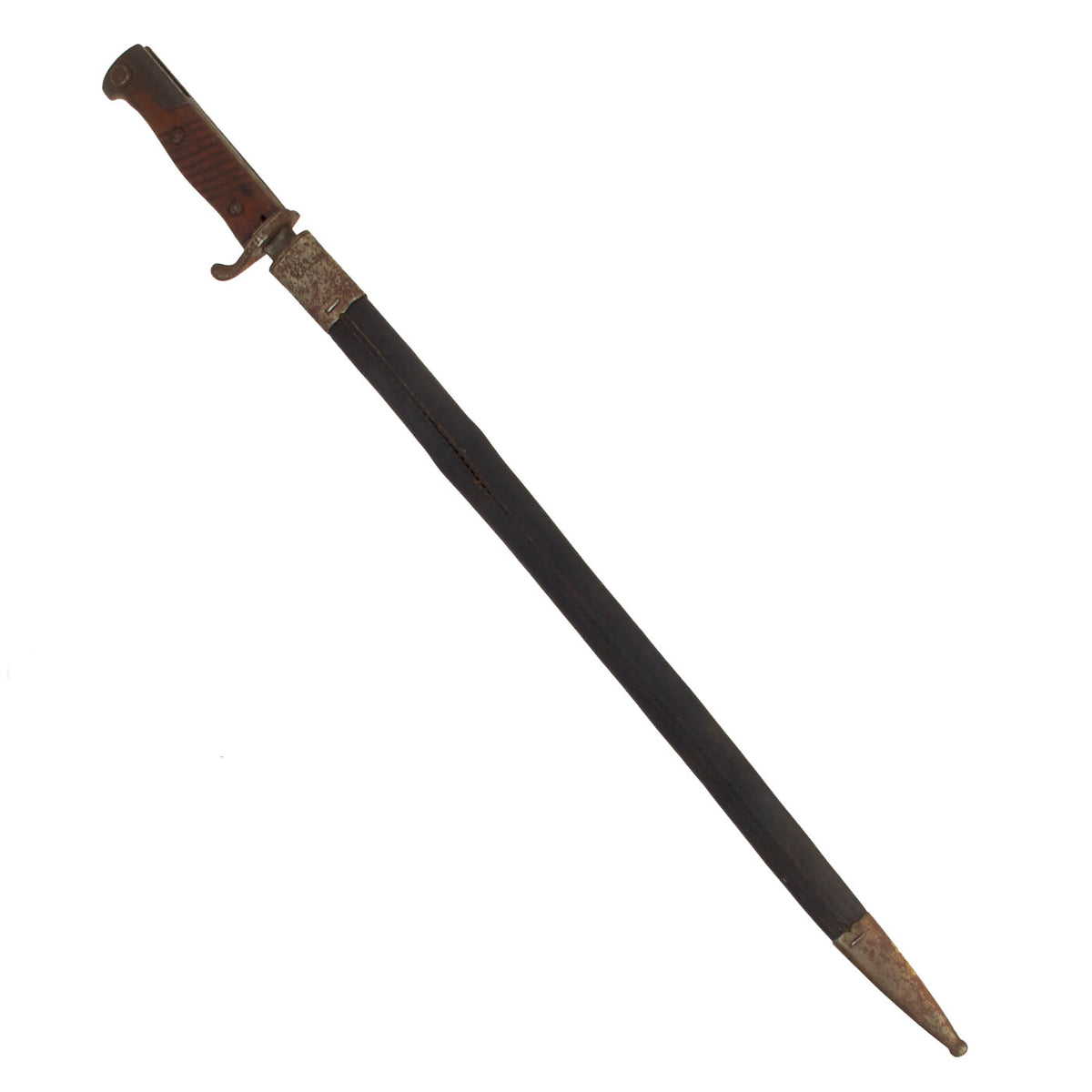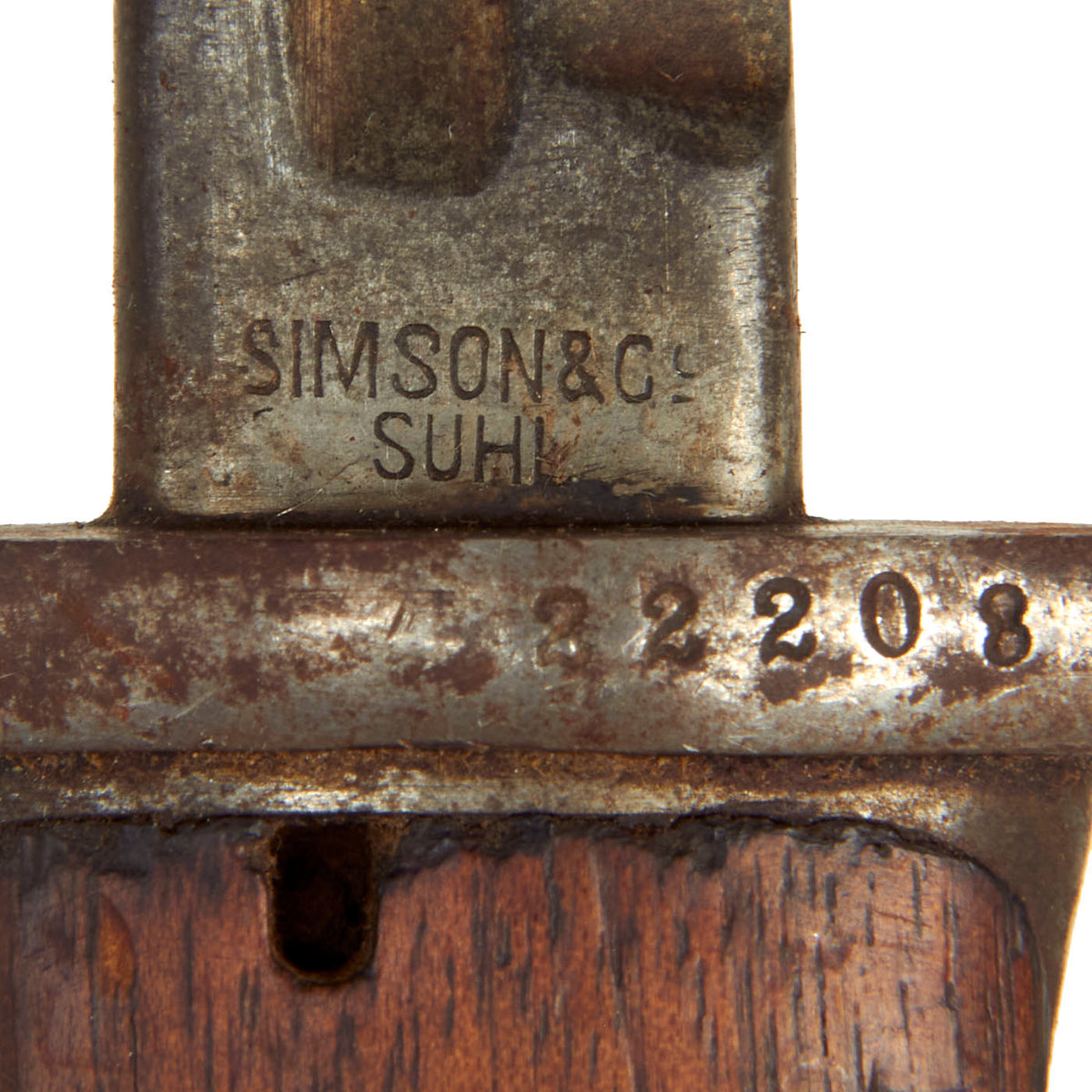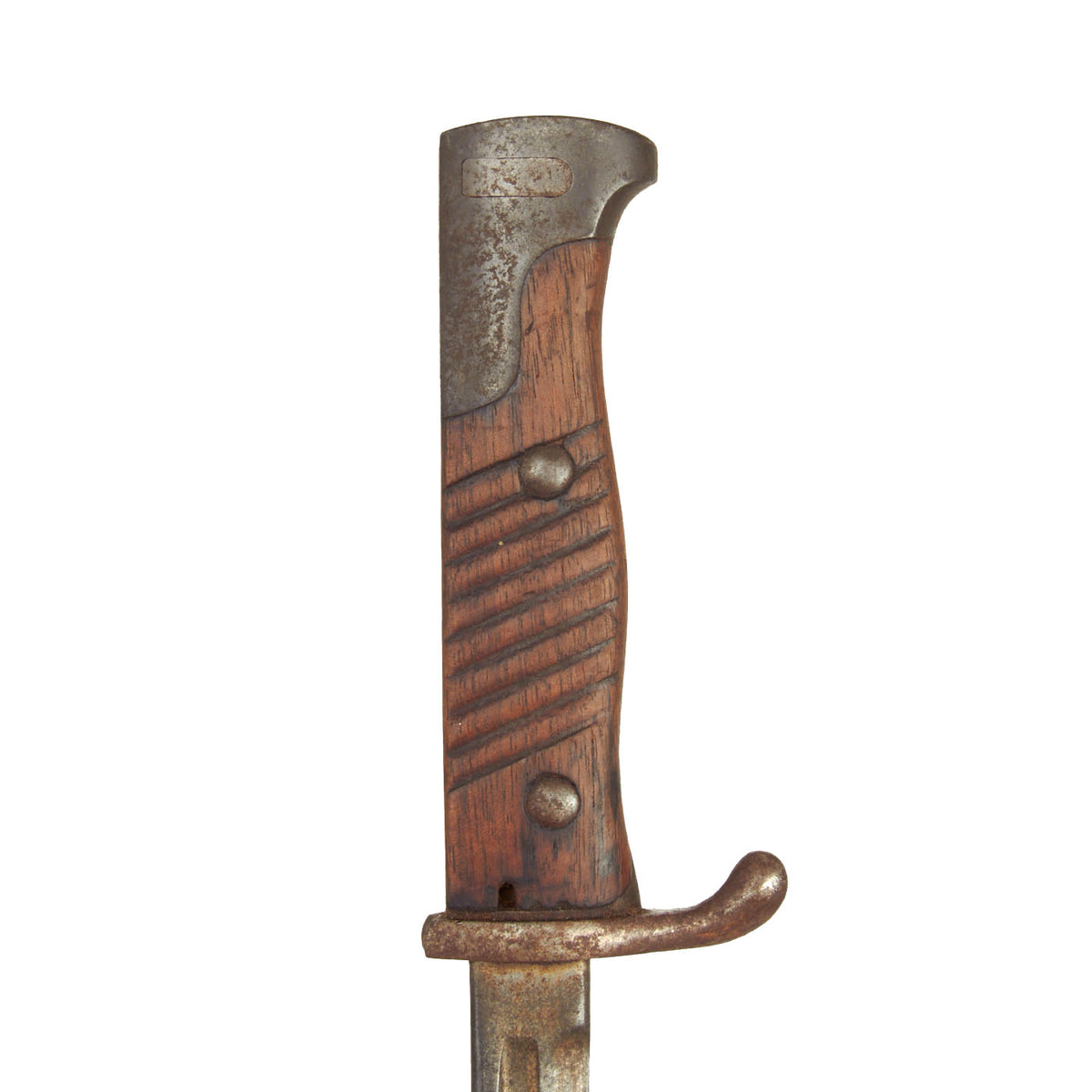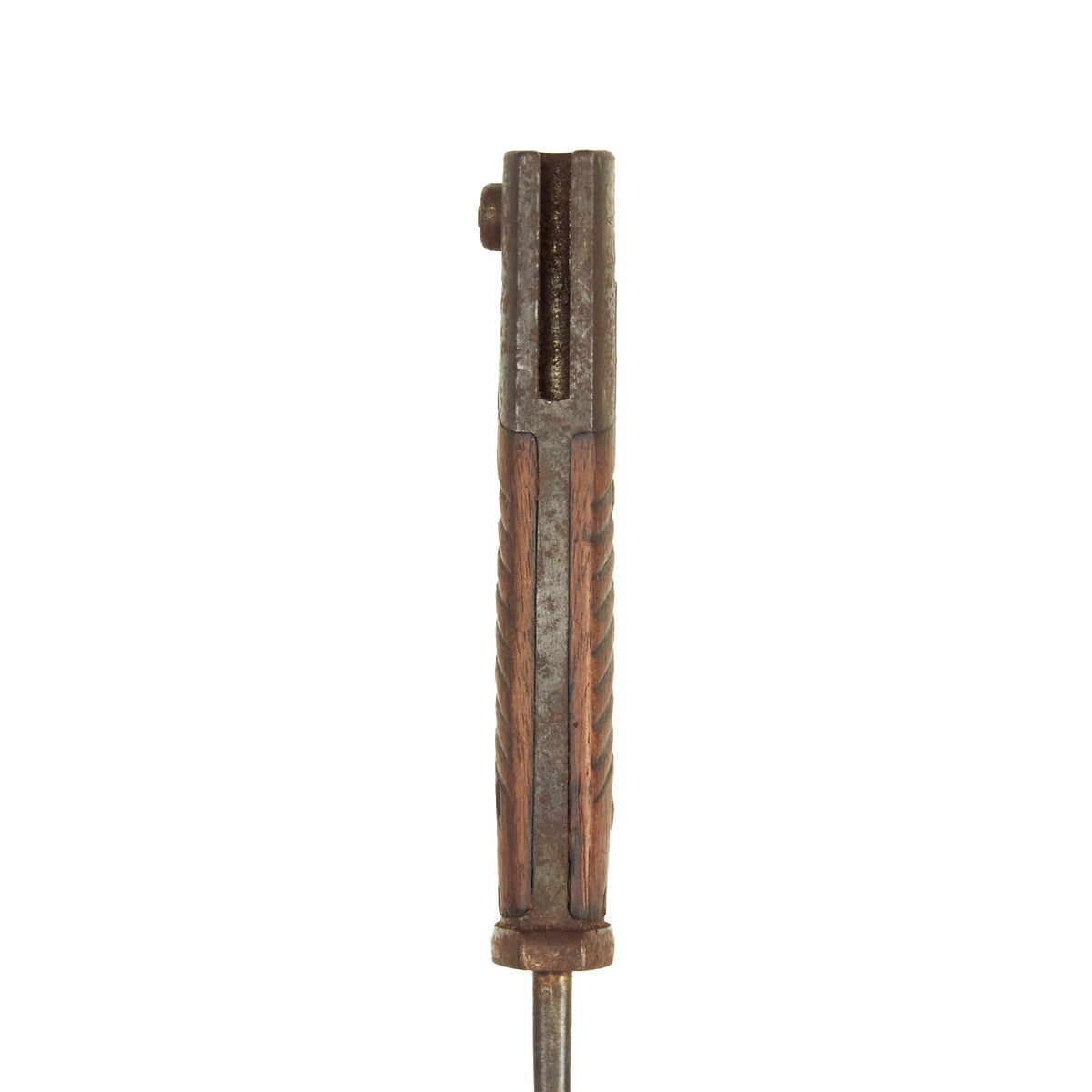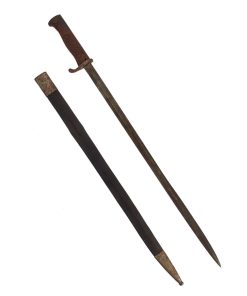Original German WWI M1898 n/A GEW 98 Bayonet by Simson & Co. with Scabbard – Kaiserliche Marine Regiment Marked Matrosen Artillerie Abteilung Original Items
$ 350,00 $ 105,00
Original Item: Only One Available. In 1898 with the new Mauser bolt action infantry rifle the military adopted this long bayonet, the Seitengewehr (Sidearm) M1898. This longer bayonet gave an Infantryman the ability to bring a Cavalryman down from his horse, due to the bayonets long reach. Of course Cavalry was soon becoming a thing of the past and these long bayonets were being surpassed by different and shorter versions. At the start of WWI in 1914 this Gew 98 long bayonet was the norm.
This fine example has the typical long “pipe backed” 20 1/2″ blade, also called a “quill back”. The spine is not proof marked or has a date present. There is a Kaiserliche Marine battalion mark on the scabbard throat: IV.M.A.A.242. This marking indicates issue to the 4th Company, Marine Artillerie Abteilung (Land-based Navy Artillery Battalion) 242nd weapon. This regiment was part of the XI Army Corps.
The blade ricasso is maker marked SIMSON & Co. / SUHL, a well-known maker of bayonets during WWI and prior. The company was owned by the Jewish Simson family, so unfortunately in the years leading to WWII, it was “Aryanized”, eventually becoming Gustloff-Werke – Waffenwerk Suhl.
This bayonet is an example of the second model of this bayonet, the n.A. (neu Art) model introduced in 1902, and the grip is made of two halves from wood. After the turn of the century the Germans simplified and strengthened their bayonet grips. The original “alter Art” (old type) bayonet had a grip made of one single piece of wood, which was wrapped around the tang.
The bayonet shows minor staining on the blade, as well as signs of sharpening, however it is overall quite nice after years of service. The grip scales are in very good condition, with no cracks, and the carved ribs are still very clear and have a lovely color. There are a few scratches and small dents. The bayonet comes complete with its original Steel Mounted leather scabbard, many of which were lost and replaced with “ersatz” emergency issue scabbards. Due to age and use it does have some wrinkles and wear, but it is overall solid, with proof marks on the throat and end fitting.
All in all a nice example of the scarce first model M1898 Gew 98 Bayonet of WWI, in good shape with scabbard and leather frog. Ready to display!
Specifications:
Blade Length: 20 3/4″
Overall length: 26”
Crossguard: 2 3/8”
Scabbard Length: 21 1/2”
The Imperial German Navy or the Imperial Navy (German: Kaiserliche Marine) was the navy of the German Empire, which existed between 1871 and 1919. It grew out of the small Prussian Navy (from 1867 the North German Federal Navy), which was mainly for coast defense. Kaiser Wilhelm II greatly expanded the navy. The key leader was Admiral Alfred von Tirpitz, who greatly expanded the size and quality of the navy, while adopting the sea power theories of American strategist Alfred Thayer Mahan. The result was a naval arms race with Britain, as the German navy grew to become one of the greatest maritime forces in the world, second only to the Royal Navy.
The German surface navy proved ineffective during the First World War; its only major engagement, the Battle of Jutland, was a draw, but it kept the surface fleet largely in port for the rest of the war. The submarine fleet was greatly expanded and threatened the British supply system during the U-boat campaign. As part of the Armistice, the Imperial Navy’s main ships were ordered to be turned over to the Allies but they were instead scuttled by their own crews. All ships of the Imperial Navy bore the title SMS, for Seiner Majestät Schiff (His Majesty’s Ship).
Fast Shipping with Professional Packaging
Thanks to our longstanding association with UPS FedEx DHL, and other major international carriers, we are able to provide a range of shipping options. Our warehouse staff is expertly trained and will wrap your products according to our exact and precise specifications. Prior to shipping, your goods will be thoroughly examined and securely secured. We ship to thousands clients each day across multiple countries. This shows how we're dedicated to be the largest retailer on the internet. Warehouses and distribution centres can be located throughout Europe as well as the USA.
Note: Orders with more than one item will be assigned a processing date depending on the item.
Before shipping before shipping, we'll conduct a thorough inspection of the items you have ordered. Today, the majority of orders will be delivered within 48 hours. The delivery time will be between 3-7 days.
Returns
The stock is dynamic and we cannot completely manage it because multiple stakeholders are involved, including our factory and warehouse. So the actual stock may alter at any time. It's possible that you may not receive your order once the order has been made.
Our policy is valid for a period of 30 days. If you don't receive the product within 30 days, we are not able to issue a refund or an exchange.
You can only return an item if it is unused and in the same state as the day you received it. You must have the item in its original packaging.
Related products
Uncategorized
Uncategorized
Uncategorized
Uncategorized
Uncategorized
Uncategorized
Uncategorized
Uncategorized
Uncategorized
Uncategorized
Uncategorized
Uncategorized
Uncategorized
Uncategorized
Australian WWII Owen MK1 Machine Carbine SMG Custom Fabricated Replica with Sling Original Items
Uncategorized
Armored Burgonet Helmet & Polearm from Scottish Castle Leith Hall Circa 1700 Original Items
Uncategorized
Armoured Fighting Vehicles of the World: AFVs of World War One (Hardcover Book) New Made Items
Uncategorized
Uncategorized
Angolan Rebel 1970s era 60mm Inert Display Mortar from Angolan Civil War Original Items
Uncategorized
Band of Brothers ORIGINAL GERMAN WWII Le. F.H. 18 10.5cm ARTILLERY PIECE Original Items
